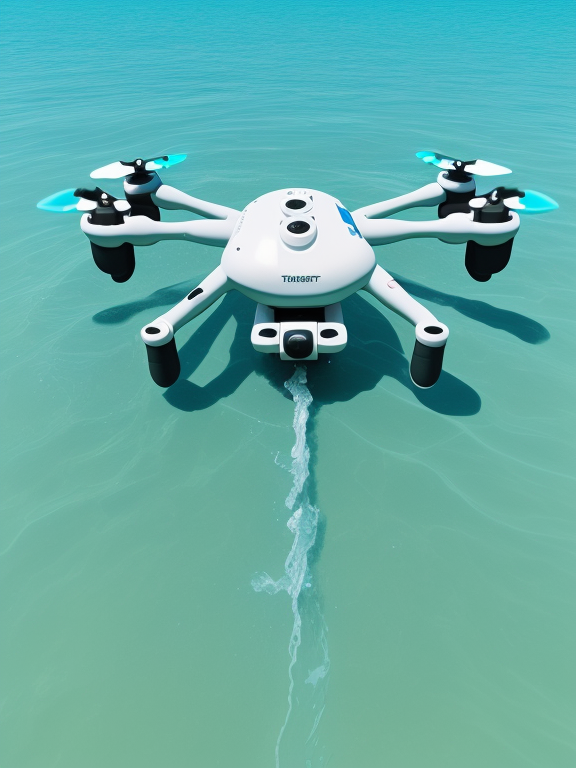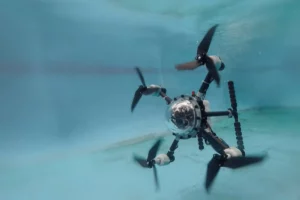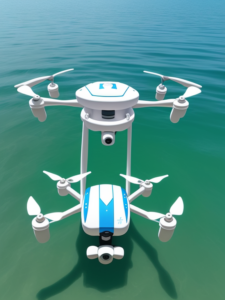
Underwater drones, also known as underwater remotely operated vehicles (ROVs) or unmanned underwater vehicles (UUVs), are sophisticated devices designed to explore and survey underwater environments. These drones offer numerous applications across various industries, including marine research, underwater photography, inspection of underwater structures, environmental monitoring, and recreational use. Here’s a detailed review of underwater drones:
Design and Construction: Underwater drones come in different shapes and sizes, depending on their intended use and depth capabilities. They are typically built with strong and durable materials like high-grade plastics, metals, and sometimes carbon fiber to withstand the harsh conditions of underwater environments. The design incorporates streamlined shapes to reduce water resistance and ensure efficient propulsion.
Control and Manoeuvrability: Most underwater drones are remotely operated using a tethered cable connected to a control unit on the surface. This cable provides power and communication to the drone, allowing the operator to control its movements and view live footage from the onboard camera. The control unit usually features a user-friendly interface with intuitive controls, making it accessible to both beginners and experienced users.

Depth and Pressure Ratings: The depth capability of underwater drones varies based on the model and purpose. Some consumer-grade drones can reach depths of up to 100 meters, while professional-grade models can withstand pressures at depths exceeding 1000 meters or more. The pressure rating is essential for exploring deep-sea environments, where water pressure increases significantly with depth.
Camera and Imaging: Underwater drones are equipped with high-quality cameras that capture high-resolution images and videos. Some models offer advanced features like 4K video recording, adjustable white balance, and real-time stabilization. The camera’s angle is typically adjustable, allowing users to capture different perspectives of the underwater environment.
Battery Life and Endurance: The battery life of underwater drones varies depending on the model and usage. In general, battery life ranges from 1 to 4 hours per charge. However, users can extend the drone’s operating time by carrying extra batteries and swapping them out during missions.
Advanced Features: Some underwater drones come with advanced features like obstacle avoidance systems, GPS positioning, and waypoint navigation. These features enhance the drone’s autonomy and make it easier to operate, especially in challenging underwater conditions or complex surveying tasks.
Underwater Lighting: To illuminate the underwater environment and improve image quality, many underwater drones are equipped with powerful LED lights. These lights can be adjustable in intensity and color, allowing users to adapt to different lighting conditions.

Portability and Storage: Portability is a significant consideration, especially for recreational users who want to carry their drones to different locations easily. Many underwater drones are designed to be compact and lightweight, making them easily transportable. Additionally, some models come with custom carrying cases for safe storage and transportation.
Price Range: The price of underwater drones can vary significantly depending on their features, depth capability, and overall quality. Entry-level consumer drones can start at a few hundred dollars, while more advanced professional-grade models can cost several thousand dollars.
Conclusion: Underwater drones have opened up exciting opportunities for marine exploration, research, and various commercial applications. They offer a convenient and cost-effective way to survey and document underwater environments without the need for human divers. When choosing an underwater drone, users should consider their specific needs, such as depth requirements, imaging capabilities, and available budget. Whether for scientific research, underwater photography, or simply exploring the depths for leisure, underwater drones provide a fascinating window into the world beneath the waves.
